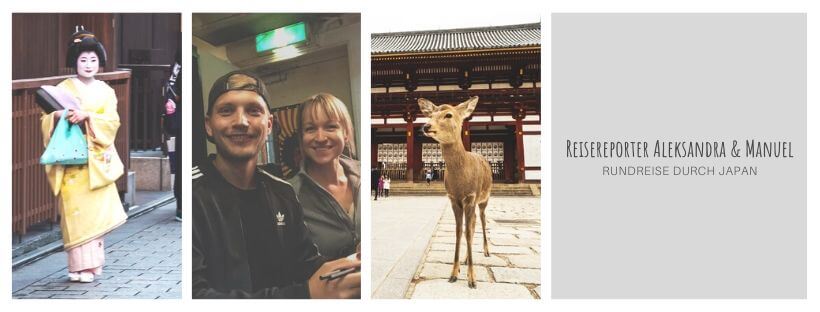We recently published an article in which we tell you all the reasons why we absolutely want to take a Japan tour (to the Japan bucket list). We’re already in love with this country, even though we’ve never been there. It’s strange, but Japan simply appeals to us so much. Have you ever been fascinated by a country you’ve never been to?
The wonderful souls and globetrotters Aleksandra and Manuel traveled through Japan and shared their absolute highlights with us. They also provide a wealth of information and tips. Many thanks for this fantastic travel report; it will certainly help us and others with our travel planning. So… have fun reading and planning!
These reports might also interest you:
- Journey through the Atacama Desert
- The most beautiful highlights in Tasmania
- My trip to the Maldives
- Round trip through North Macedonia
- Tonga in the South Pacific
- My trip through Mexico
- Cool tour of Cornwall and Devon
- My tour through Myanmar
- On your own through Botswana
- The Indonesian Moluccas
- Top Highlights on Nusa Penida
- Cappadocia in Turkey
- These reports might also interest you:
- Why a Japan tour?
- Our journey to Japan
- How we got from A to B
- This was our route through Japan
- Our top highlights in Kyoto
- Our top highlights in Tokyo
- Our top highlights in Hiroshima
- Our top highlights in Osaka
- Where we stayed overnight
- Special features and Bizarre Things in Japan
- Packing List – These Are the Things You Should Bring
- More Important Travel Tips for Japan
- Conclusion on Japan
Why a Japan Tour?
Do you know this feeling? You set foot in a country for the first time after a long journey and immediately you get this feeling of “Mh… that’s perfect!” Although the language, food, and customs are different, it all seems familiar. Somehow it feels really good to be here, to have arrived. Almost like coming home, only there’s no “Servus!” as a greeting, but rather a “Konnichiwa.” That’s how we felt when we arrived in Kyoto after a long tour of Southeast Asia. Our expectations for the Japan tour were high. Let’s just say one thing in advance: they were surpassed, but in many ways where we hadn’t initially expected.
Samurai, cherry blossoms, temples, sushi, manga, crowded streets, crazy fashion, Mount Fuji, the deer from Nara Park, and so on… we wanted to discover all of this in Japan. In 2018, we, Manuel and Aleksandra, set out with our backpacks from our hometown into the wide world – first through Southeast Asia, then on a tour of Japan! We wanted to see all this and so much more that this interesting country has to offer with our own eyes, BUT we also didn’t want to spend so much money. And so we traveled through Japan for two weeks by bus and, in this travel report, we’ll take you along on our Japan tour.
Our journey to Japan
In mid-January, we flew from Phnom Penh, with temperatures of 35°C, to Osaka, with temperatures of 5°C. From Osaka, we took a local bus straight to Kyoto. The distance isn’t very far, and Osaka was our arrival and departure point. We had planned a longer stay there for the end of our tour. We flew from Phnom Penh to Osaka for 340 euros and from Osaka to Hawaii for 310 euros.
We realized we were in Japan in a mall in Osaka while waiting for the bus to Kyoto. We were so fascinated and amazed by the most obvious things – the cleanliness and… toilets! Japan is such a stark contrast to Southeast Asia. There’s virtually no obvious trash lying around. Everything is constantly being cleaned, including trash cans. You don’t see many of those, by the way!
Japanese people are encouraged to carry their trash around until a trash can appears, or simply throw it away at home. It takes some getting used to, but ultimately, we found it pretty cool. And the toilets… We could probably write a whole post about them. They’re incredibly clean, and not only that! Imagine a Western-style toilet bowl you can sit on, with a heated seat, splashing or music to drown out your own noises, and a butt shower to keep everything clean down there!
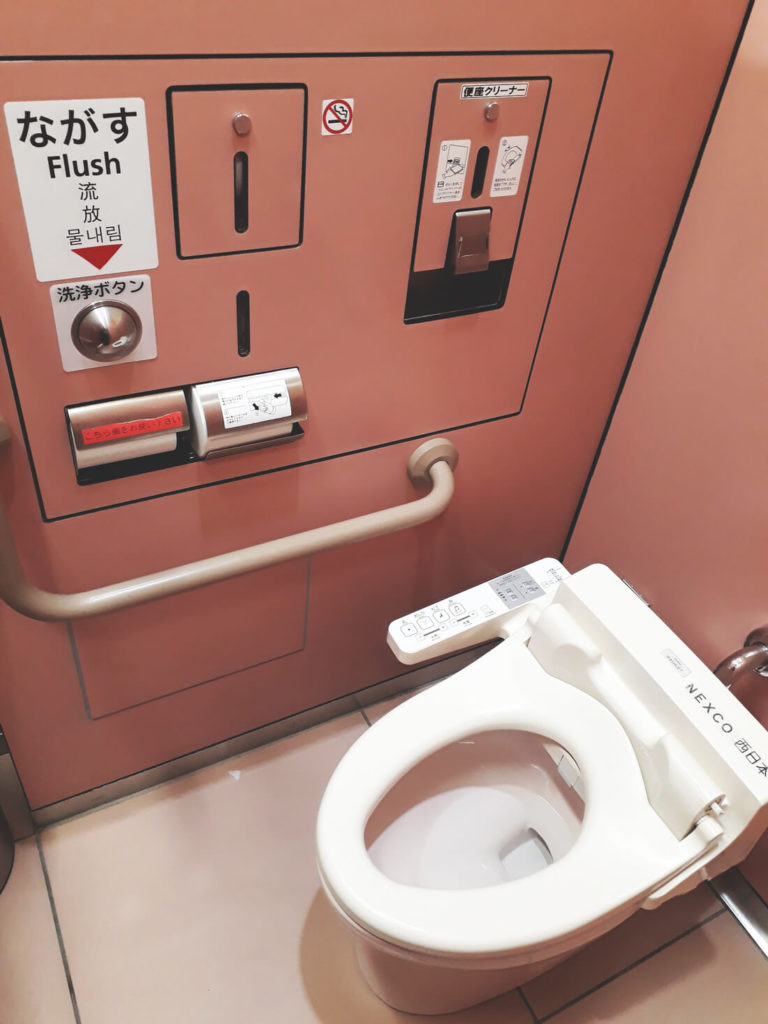
The latter in particular is unusual, but once you get used to it, you won’t want to miss it. Toilets, and especially the use of toilet paper, are generally considered unhygienic in the Western hemisphere. Toilet paper is only used for drying after using the shower. This saves a good 50% of toilet paper! Plus, it’s available everywhere and free, too. A dream come true for anyone with a confirmation bubble…!
How we got from A to B
The famous Shinkansen train
Within Japan, it’s very easy to get around by train or bus. The famous Shinkansen train definitely has its appeal, but also its price. However, the reliability of the Shinkansen is unmatched compared to the ICE or TGV – the average delay is 24 seconds, including service interruptions during typhoons and earthquakes! (Source). However, a ticket for two weeks costs $434! You can find current information here: www.japanr-pass.com.
The advantage is clear: The trains are comfortable, fast, and extremely punctual. However, you should note that this pass should be purchased BEFORE entering Japan, as the ticket is shipped worldwide with DHL Express and shipping takes approximately 3-5 days. We could have somehow managed to have it delivered to a shopping center in Phnom Penh, but the cost was still too high.
Bus Travel
So, we needed an alternative for our Japan tour. We quickly found one. We used the Japan Bus Pass through WILLER Express. We decided in advance which long distances we needed to cover and chose the cheapest option. This bus pass has the restriction that it can only be used from Monday to Thursday. That was fine with us. So our pass included the trip from Kyoto to Tokyo by night bus on a Thursday, Tokyo to Hiroshima by night bus on a Monday, and Hiroshima to Osaka during the day on a Wednesday.
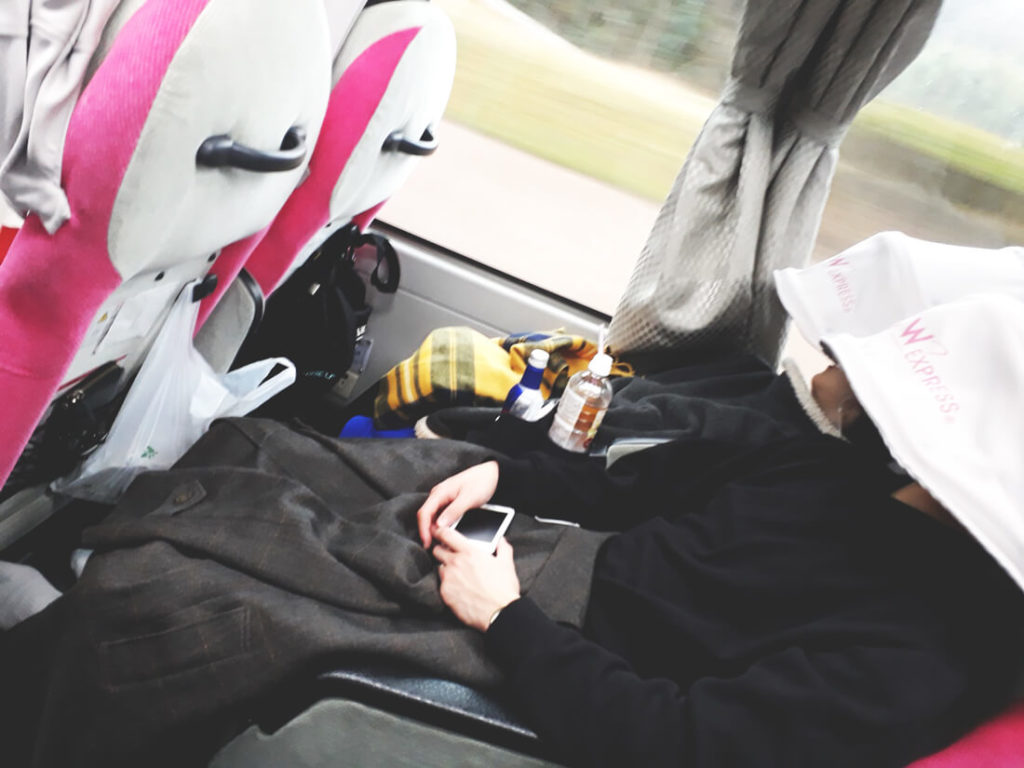
We paid €80 for these three major routes and saved two nights in accommodation thanks to the night trips. That was a relief for our travel budget! The bus stops at a rest area every one to two hours, and we can tell you, it’s paradise! Great restrooms and delicious food! Of course, the buses aren’t for everyone. The seats are quite narrow. But each seat has a hood to darken your field of vision and a retractable leg rest. The advantages were clear to us.
This was our route through Japan
Our Japan tour lasted two weeks and took us to the following places:
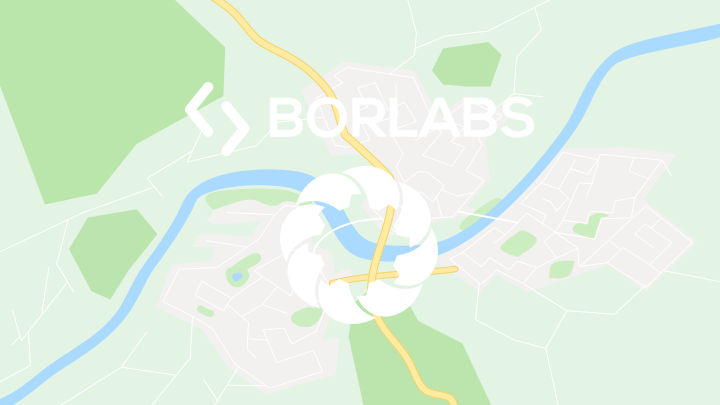
By loading the map, you accept Google’s privacy policy.
Learn more
Load map
- Arrival in Kyoto via Osaka by bus from the airport on a Tuesday. We spent three nights in Kyoto until Thursday.
- Then we took the night bus from Kyoto to Tokyo, where we spent three nights – one with Yohei, a Japanese couchsurfer, and three in a hotel.
- This was followed by another night trip from Tokyo to Hiroshima, with a one-night stay there.
- Then we took the day bus to Osaka for four nights and a day trip to Nara Park, concluding our Japan tour.
If you look at this route on a map, you’ll see the dimensions. We really gave it our all! But we wanted to make the most of our two weeks. In retrospect, we wish we’d taken more time. There was hardly a second of relaxation and recuperation during those days. We would have loved to go hiking and get off the beaten track. But you really need more time for that.
The big cities alone have so much to offer that we would say we definitely didn’t see everything, but rather scratched the surface. Nevertheless, it was worth it for us! The impression we gained of Japan has only made us want to travel to this country again.
Our top highlights in Kyoto
Because this culture seems so extraordinary to us in many ways, there are countless highlights. Somehow, every shrine, temple, and castle seemed fantastic to us. Here, we summarize our highlights for each city we visited.
Our city tour really began inKyoto. There are numerous highlights to mention, as Kyoto is of particular cultural significance for Japan. We will limit ourselves to our TOP 5, which we will guide you through all directions of Kyoto in order.
1. Kinkaku-ji Temple in the North
In the north of Kyoto, you’ll find the Kinkaku-ji, a Buddhist temple completely covered in gold and a UNESCO World Heritage Site. The Golden Temple has a very beautiful park. During our visit, a group of students from Fukuoka interviewed us in English about our first impressions of Japan.
They were so sweet, shy at first. But after we turned the tables and asked them questions, they quickly warmed up. We walked through the complex with them and had a lot of fun. We’ve remembered it to this day.
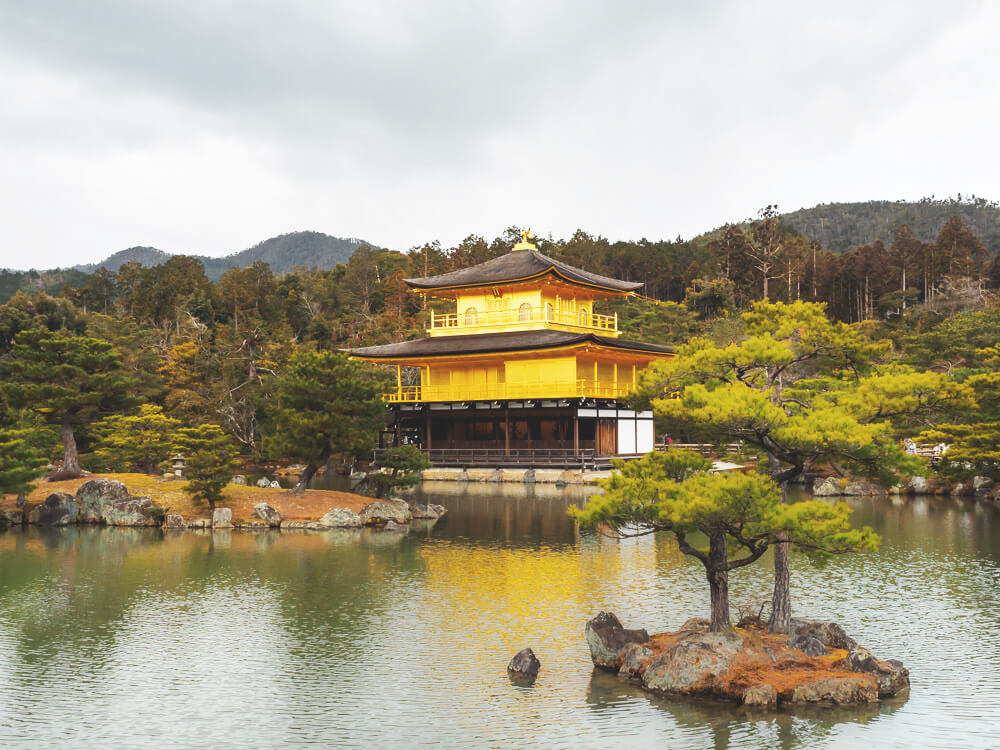
2. Sagano-Arashiyama Bamboo Forest
The Sagano-Arashiyama Bamboo Forest in the west is a beautiful hiking area with a bamboo forest passage. It makes a fantastic sound when the wind sweeps through the Moso bamboos, creating that unmistakable chorus.
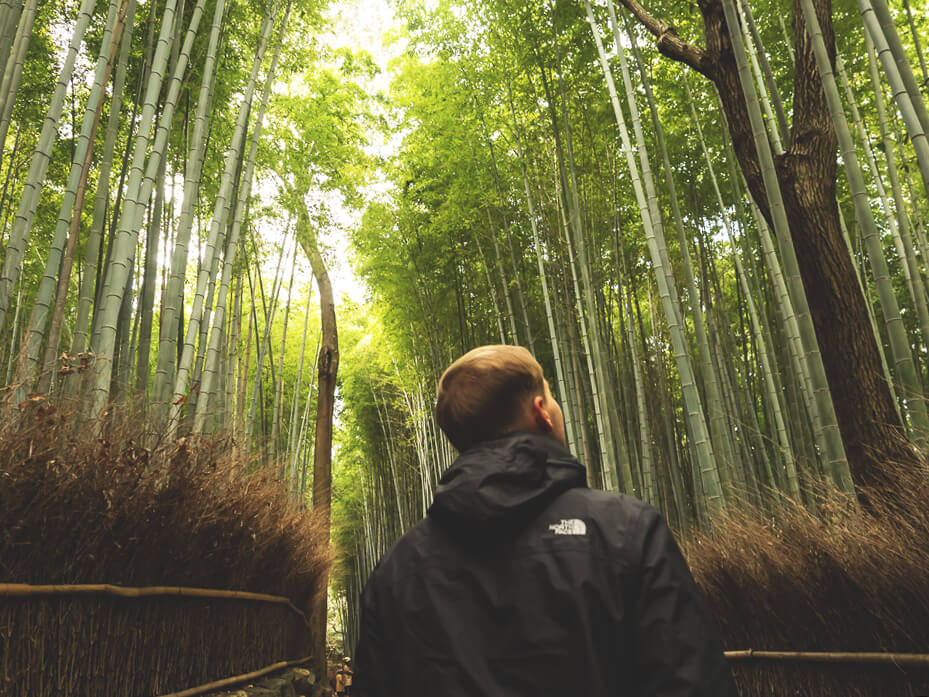
3. Fushimi Inari-Taisha Shrine
In the south, you’ll find Kyoto’s oldest Shinto shrine, the Fushimi Inari-Taisha. It is known for its thousands of red torii gates. We took advantage of the early morning hours around 7:30 a.m. to hike up the path to the top of the mountain. We highly recommend both getting up early and making the entire climb, as with every meter of elevation, there are fewer people around, and the path has a tranquil, fascinating, and meditative quality.
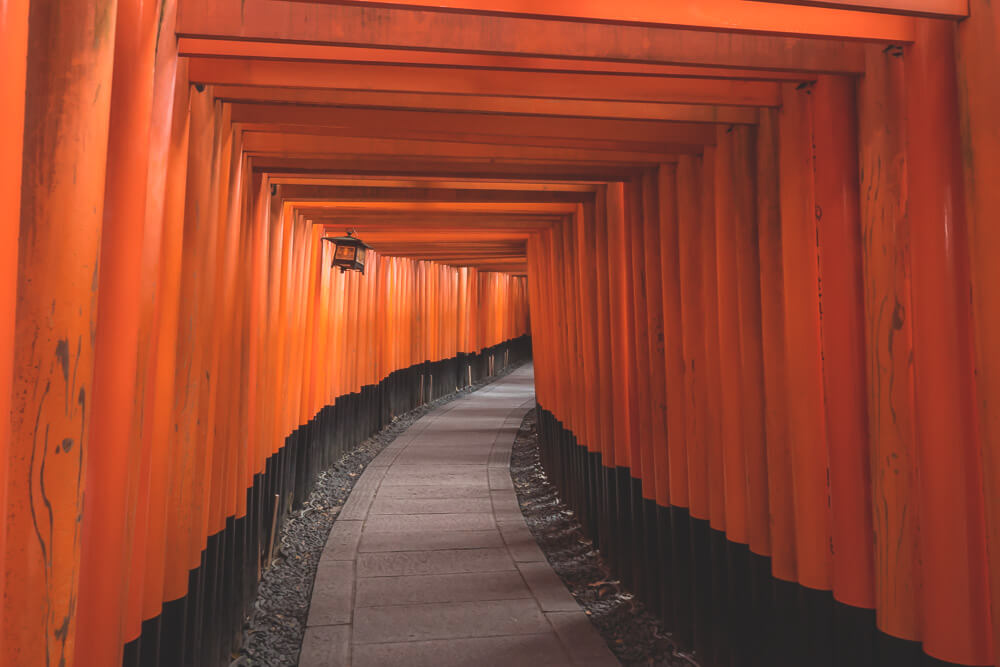
4. The Old Gion District
The Gion district is a very old, traditional, and beautiful district with many pagodas in eastern Kyoto. With a little luck, you might see a maiko there; only with a lot of luck and unfortunately a low probability will you see a geisha. A maiko is a trainee geisha and is still in training. They are shy and in a hurry.
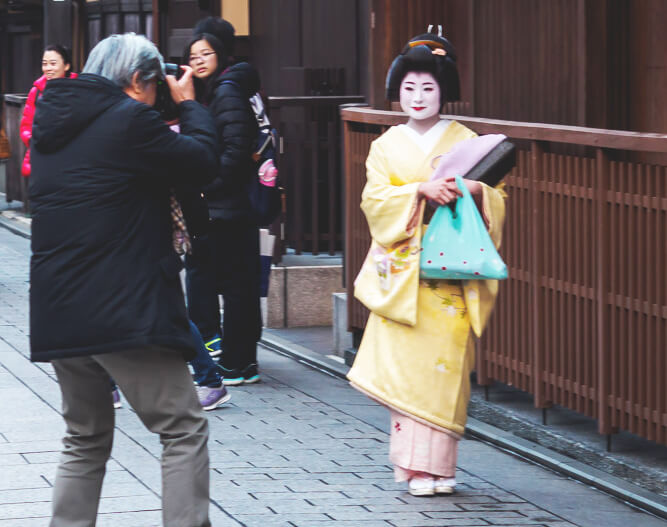
We saw a maiko by chance and were able to take a snapshot. Geishas, on the other hand, are very well shielded from the public eye. They preserve Japanese traditions. A play or a visit to a teahouse are certainly unique experiences that we would have loved to have in Kyoto!
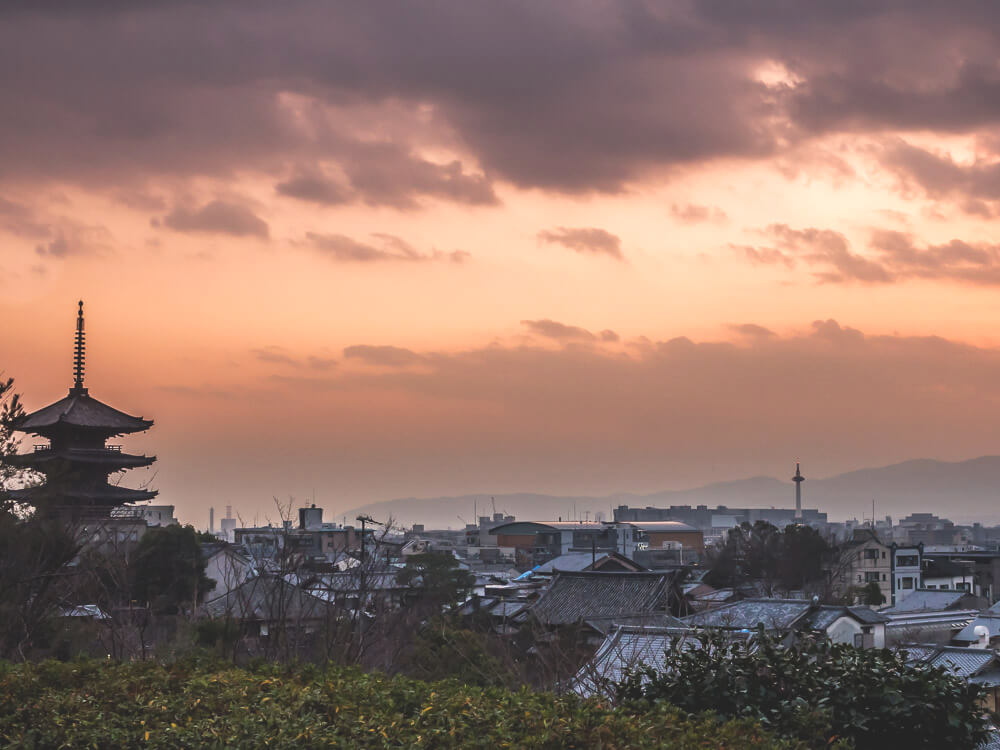
5. The Nishiki Market
In the Nishiki Market you’ll find plenty of dining and shopping opportunities. It’s a paradise for all foodies! We found a very good sushi place with conveyor belt sushi in one of the countless side streets. A Japanese couple we were seated next to thankfully gave us an introduction to “How to eat…running sushi.”
Our top highlights in Tokyo
If you look at the statistics, Tokyo is considered the largest city in the world! This global city can overwhelm you… We were totally overwhelmed at first, and it quickly became clear that we had to agree on a few highlights. However, before we present our TOP 7 Tokyo highlights, a tip in advance:
1. Tsukiji Fish Market
The Tsukiji Fish Market was an insider tip from our couchsurfer. Unfortunately, we found the doors closed because we arrived late – it’s best to check the opening hours beforehand! This market used to be considered the largest fish market in the entire world, crazy, right? It has apparently since been closed and relocated to Toyosu, and has now reopened as “Toyosu Market.”
2. Shibuya Crossing
Shibuya Crossing and Hachiko Dog Statue: No one can avoid this famous intersection. While Starbucks used to be a real insider tip, we have another one for you. The best view of the intersection is from the Sanrio Gift Store, a small mall across from Starbucks. Take the elevator to the lowest possible floor, walk left through a restaurant, and then reach an observation deck – FREE! The famous Hachiko Dog Statue is located in front of Shibuya Station and is considered an unofficial symbol of the city. Be sure to watch the film beforehand so you know what we’re talking about.
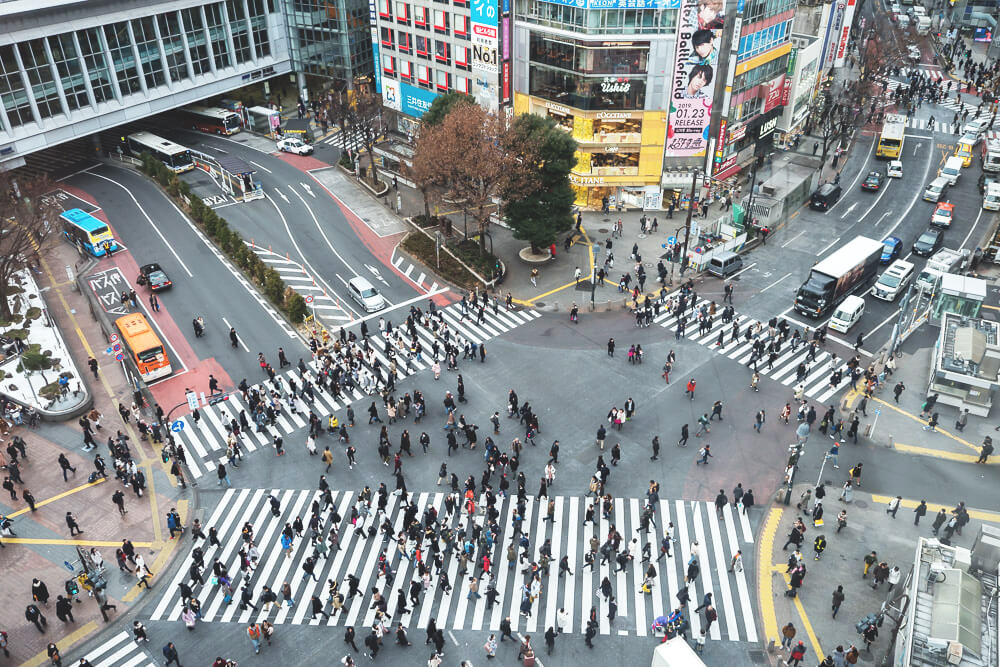
3. Takeshita Street
The Japan tour continues! Takeshita Street is a really cool and interesting shopping street. Quite crowded, but full of interesting curiosities. South of Harajuku Station, you’ll also find Cat Street and its branches or extensions, which offer numerous secondhand shops, cafes, and restaurants.

4. The Akihabara District in Tokyo
The Akihabara District boasts the strangest curiosities. You’ll find everything related to Nintendo and Sega, manga…it’s simply crazy. Every manga shop has an over-18 section…you don’t have to like it, but it’s part of modern Japanese pop culture.
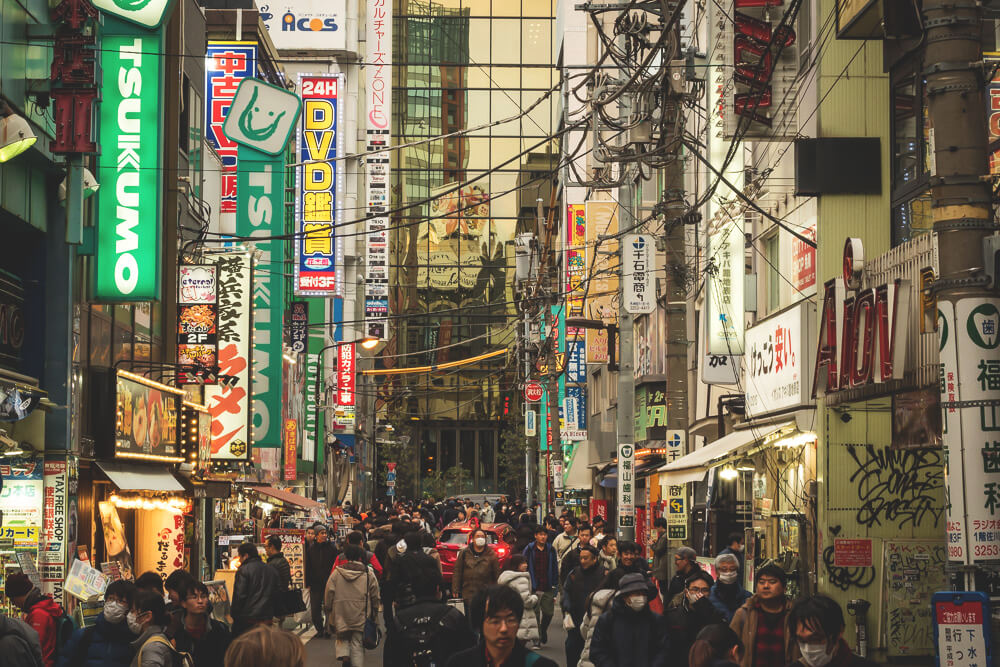
5. View over Tokyo
Our tip for an AMAZING view of all of Tokyo, including Mount Fuji, is the Metropolitan Government Building. The best part is that this view is free! The viewing point is on the 45th floor of both towers.

6. Sake in Golden Gai
The best place to drink original Japanese sake is in the Shinjuku Golden Gai district. There are many small bars lined up next to each other. They all charge admission, and not all of them are accessible to tourists. Some include a free drink with admission, others don’t. It’s not cheap, but we still think it’s a unique experience. Also, check out a crazy café like the 8bit Café.
7. The Asakusa District
The Asakusa District is essentially the old town district. You can find beautiful souvenirs there. The street leads to a very famous Buddhist temple, the Hozomon Gate. You’ll also find many handicraft shops, the Hanayashiki amusement park, and many bars, restaurants, and snack bars in this district.
Our Top Highlights in Hiroshima
We took the night bus to Hiroshima. We arrived in the city relatively shattered and first acclimatized ourselves in the hostel. This stay focused on two highlights that we highly recommend: the Hiroshima Peace Memorial Museum and a trip to Miyajima Island.
The museum is one of the best we’ve ever seen. Never before has history been so tangible, vivid, and heartbreaking for us. In the immediate vicinity of the museum stands the Atomic Bomb Dome, a peace monument and memorial site in one, above which the atomic bomb “Little Boy” detonated just 140 meters away. After such a museum visit, there’s not much else to do.
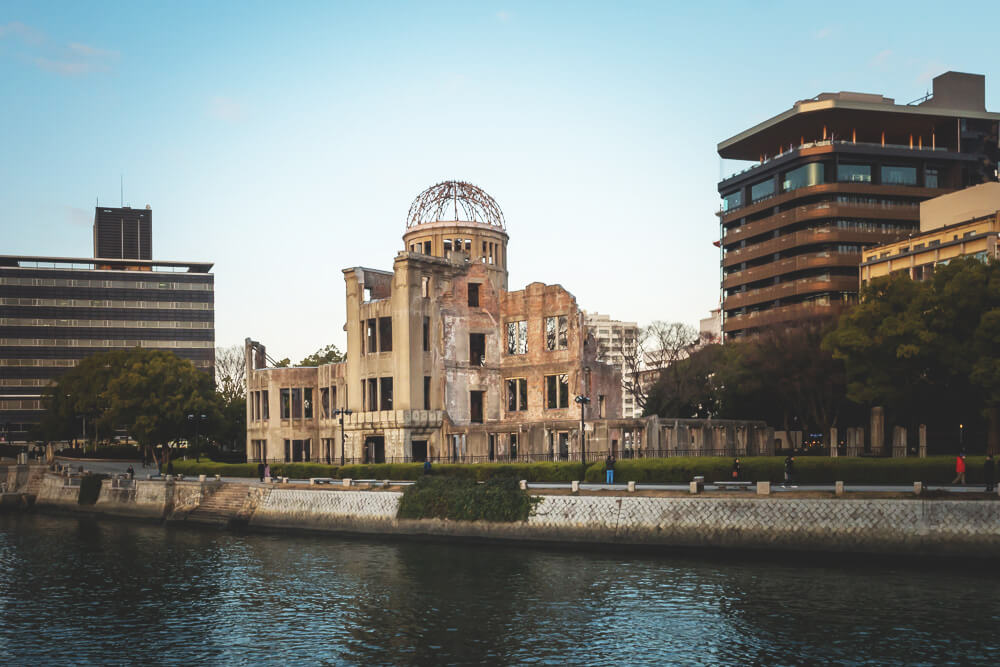
The next day, we took a trip to the island of Miyajima. The Itsukushima is a floating torii gate, arguably the most famous Japanese gate. Taking photos on location is particularly worthwhile at sunset and during the blue hour. The deer roaming freely are very friendly. This island, located off the coast of Hiroshima, exudes a pleasant sense of tranquility. You can get there easily by tram and ferry!
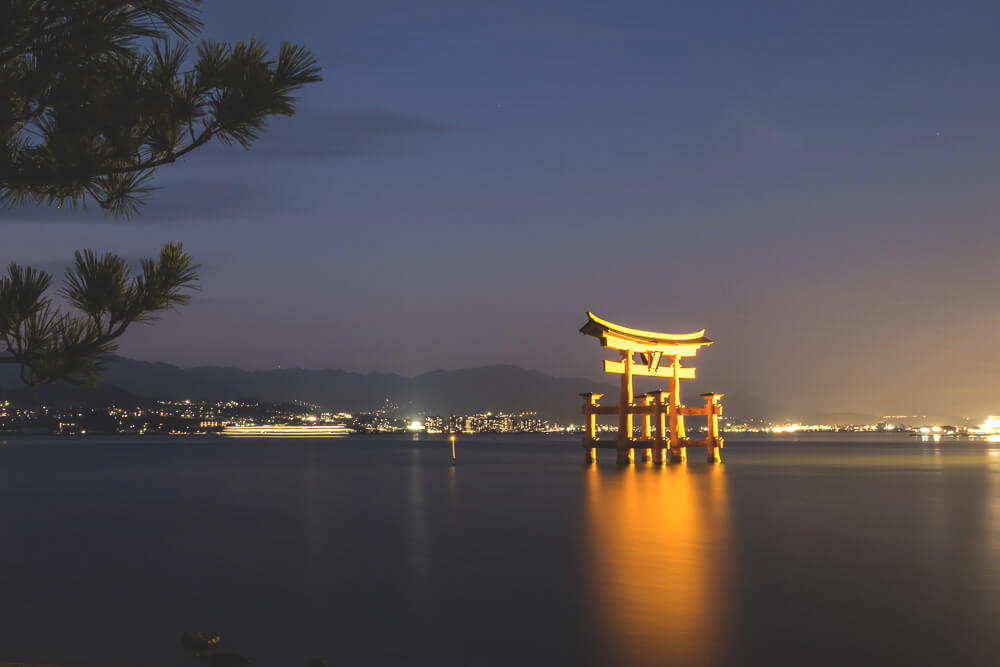
Our top highlights in Osaka
Osaka was the crowning conclusion to our Japan tour! Here are our TOP 4 Osaka highlights for Osaka:
1. Osaka Castle
Osaka Castle is highly recommended! Even from the outside, it looks impressive and somewhat surreal. Osaka Castle is one of the most famous castles in Japan and should definitely be a stop on your trip.
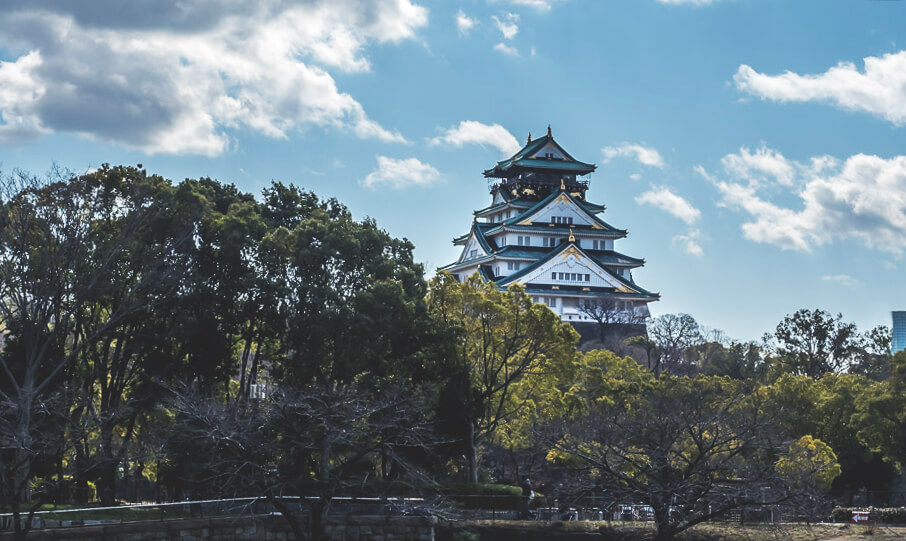
2. Dotonbori Street
You can shop your way up and down Dotonbori Street. We found it most beautiful in the early evening. You can take wonderful photos there that radiate the atmosphere of a Japanese Times Square! Here, everything is lit up and sparkling; the numerous billboards are somehow reminiscent of Hong Kong.
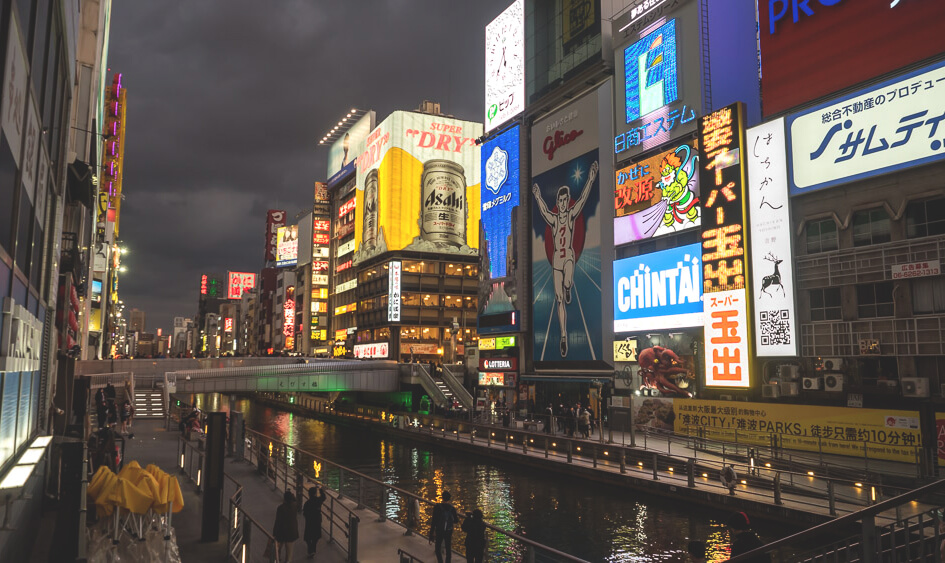
3. The Tsutenkaku District
The Tsutenkaku District around its famous TV tower had, in our eyes, a very special charm. There are many casinos and arcades there. For us, a very unique world of Japan opened up here once again… If you’re in the mood for a bit of gambling and risk, you’ve come to the right place.
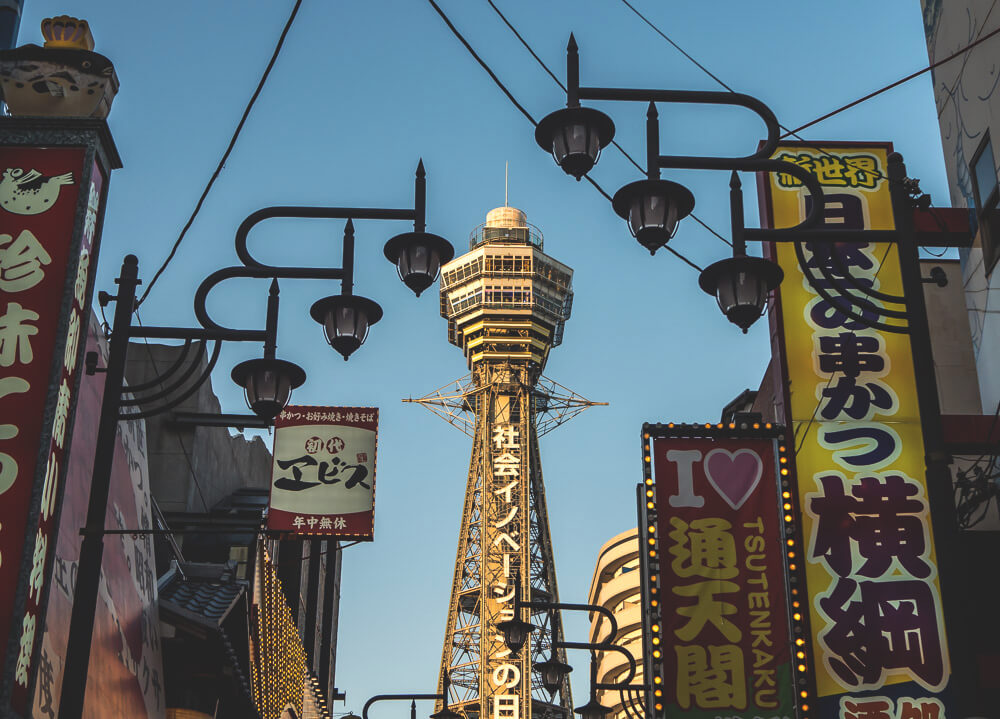
4. Nara Park
Nara Park is an incredibly expansive and large park, east of Osaka. It’s located outside the city, but the trip there is worth it. There are also many deer there that are so conditioned that they bow their heads gratefully after being fed. Crazy!
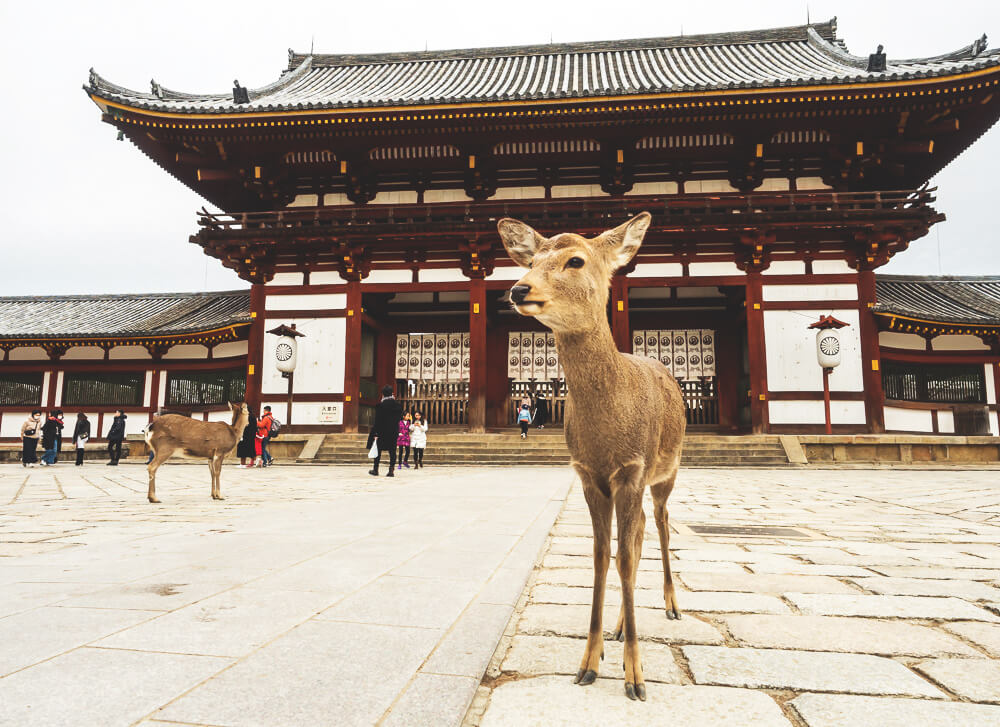
This is where we stayed
When researching accommodations in Japan, we initially resorted to similar strategies that we had successfully tested in Southeast Asia: Doing research beforehand and asking on-site about the cost of a night to find any available rooms at a lower price. We can tell you, THAT isn’t worth it for Japan. We booked through Agoda and Booking.com*. These were definitely the platforms with the cheapest deals. In many cases, even cheaper than booking locally!
Our accommodation in Kyoto
We stayed in the best hostel in Kyoto! We always weigh up price, service, authenticity, and cleanliness. The Shiori-an Guest House* cost us €40 for two people for three nights in a simple private room with two single beds! The shared bathrooms, separate for men and women, and the kitchen were very clean and well-equipped.
They even have washing machines that you can use for free! The beauty of Shiori-An is its originality: The hostel is in the style of a ryokan, a traditional inn with wood, bamboo, and low furniture. A stay in a ryokan is a must anyway, so why not there!
Our Accommodations in Tokyo
In Tokyo, we stayed one night with Yohei. He is in his early 20s and was still living with his parents in northern Tokyo at the time. We were his first couchsurfers ever! He took us to his favorite ramen restaurant, willingly answered all our curious questions, made our bed, took us on one of the first trains the next day to Tokyo’s business district, and spent his lunch break with us.
There’s hardly a better way to get to know a foreign country than through the eyes of a local.
Such an encounter is highly recommended. There’s hardly a better way to get to know a foreign country than through the eyes of a local. Imagine a walking guide to Japanese culture! In the best case scenario, a friendship can develop from this. We’re still in contact with Yohei and hope we’ll have the opportunity to show him around our place sometime!
We spent the other nights in a hotel. The Asakusa Hiromas Hotel Kura* wasn’t quite as good a deal as our Kyoto hostel, but it was very large and clean. It cost us €20 per night for two people in a dorm and €40 for one night in a private ryokan-style room for two people. The kitchen is located next to the lobby, which is very basic, but modern and clean. The highlight of the hotel is the rooftop terrace with its red torii gates.
Our Accommodation in Hiroshima
In Hiroshima, we stayed at the Santiago Guesthouse Hiroshima* in a private room and paid a total of €62 for two nights and two people. It has a large common room and a superbly equipped kitchen.
Our Accommodation in Osaka
In Osaka, we slept at the Gate 80* in a mixed dorm and paid €76 for four nights and two people. There’s also a spacious kitchen with a lounge area.
Special Features and Oddities in Japan
But what are the Japanese like? It’s clear that in two weeks of traveling around Japan, we were only able to gain a tiny glimpse into this foreign and sometimes very close culture. Perhaps you’ve even been there before and gained a completely different impression. We report based on our experiences.
The Politeness of the Japanese
It’s amazing how polite and helpful the Japanese are. It’s deeply rooted in their culture that every guest is greeted and said goodbye to. As a tourist in Japan, you’re a guest everywhere. Be it in the supermarket, at the bus or tram station, at the border crossing, or in the hotel. This politeness sometimes seems almost formal. As helpless-looking tourists, we always had a bonus. How often were we asked if we needed help finding our way! Actually, every time we arrived in a city, we got lost in the subway or didn’t know how to get from A to B. That was great.
The punctuality of the Japanese
And the Japanese are extremely punctual. Wow. Anyone who knows us knows that we have a hard time with that, and that’s exactly why we ran to the bus station more than once… You’d think we’d learn from this, but somehow we never manage to get there earlier. In Japan, everything runs according to plan, punctually. To be polite, here’s a little digression: We had once again snoozed too often in the morning, gone too late for breakfast, packed our bags, etc. We realized on the tram how tight a time it would be again.
The bus was scheduled to depart from the south exit of Hiroshima Station at 9:45 a.m. Luckily, we arrived at the south exit of the station at 9:40 a.m. It was pouring with rain. We had five minutes to locate the correct departure point and run there with our backpacks. It was a perfect landing. We saw the bus from a distance and ran off, getting a green light.
The driver and a woman with an umbrella were already standing at the bus, slightly nervous, beaming at the sight of us. No joke. They beamed, laughed, and waved. We ran and beamed too. The woman even ran up to us and held out her umbrella – after that, we thought, “Where does something like that happen?” Manu confirmed the booking, and we thanked them. It was 9:44 a.m. They took our luggage, thanked us several times, we boarded, and the bus left immediately. Lucky again!
Japanese are meticulous and strict
These initial positive impressions were accompanied by others, sometimes not so glorious. Because Japan can also be different. Correct, strict, and traditional. In addition to the politeness, we were also struck by how precise and strict many things are. These are very different things: When waiting for a bus, train, etc., people line up in a row, one behind the other at a marked spot on the floor. It’s the same when paying at the checkout.
Public transportation is completely silent. We rode into Tokyo with our couchsurfer during rush hour one morning. The train was very crowded, but no one spoke a word. An oppressive feeling spread through us, one we had previously only experienced in a crowded elevator… There are rules of conduct, markings, signposts, etc. in all public places or paths. Usually nicely illustrated as a manga, it remains what it is: a rule: which direction you should walk, that looking at your cell phone while walking can be dangerous, what you should and shouldn’t step on, when, and how.
A tricky situation including a slap in the face
A situation that really made our ears ring happened on our second evening in Kyoto. We observed a scene near a pagoda. Six boys were fooling around and taking photos of each other. Among other things, they were standing on a small patch of grass where they shouldn’t have been. Shortly afterwards, a (we think) landscape gardener approached the group. Walking quickly and angrilyHe fought with the boys. There was a loud argument. Two apologized, bowed deeply, and left, while the rest continued to discuss.
At some point, the man walked away. The boys imitated his voice. He didn’t find that funny at all. He came back and slapped one of them. We were quite stunned. The guy who was slapped didn’t find it funny at all either and pushed the man. Everyone got loud and barked at each other until tempers calmed down. We thought this physical reprimand was completely inappropriate and, in our opinion, unthinkable here.
Japanese wear uniforms
Professional uniforms are omnipresent, by the way. There’s a uniform for seemingly every profession. This starts with school uniforms and extends to every branch of the public service. Be it the bus driver, police officer, ticket inspector, ferry staff, taxi driver, etc. It’s very exciting to observe.
Japanese love quirky cafes
But let’s move on to the oddities and the bizarre. It’s quite extensive. In Tokyo in particular, there are many strange things to discover, such as the cafes. There are countless, but they’re really expensive because the Japanese are into crazy pranks like feeding or petting owls, hedgehogs, dogs, and cats in cafes.
We saved ourselves a visit to such a cafe, literally. Just entering costs €7-10. Usually, the stay is limited to about 10 minutes, and we felt really sorry for the POOR animals. We once peeked into a cat cafe from the outside. It looked horrible. As if a rainbow had exploded. Cats were fed lollipops by visitors.
Japanese Cuisine
We tended to spend our money in market halls or at street stalls. Because, as they say, the way to a person’s heart is through their stomach, and Japanese cuisine is very different, refined, and simply delicious! We recommend trying the following (not suitable for vegans or vegetarians): Okonomiyaki in Osaka (a type of Japanese omelet that originates there, with sauces and wafer-thinly sliced fish that appears to move due to the heat!), Takoyaki (octopus balls), Taiyaki (best ordered on Miyajima – with red bean paste), Sushi (running sushi in the Nishiki market hall in Kyoto or the Tsukiji fish market in Tokyo).
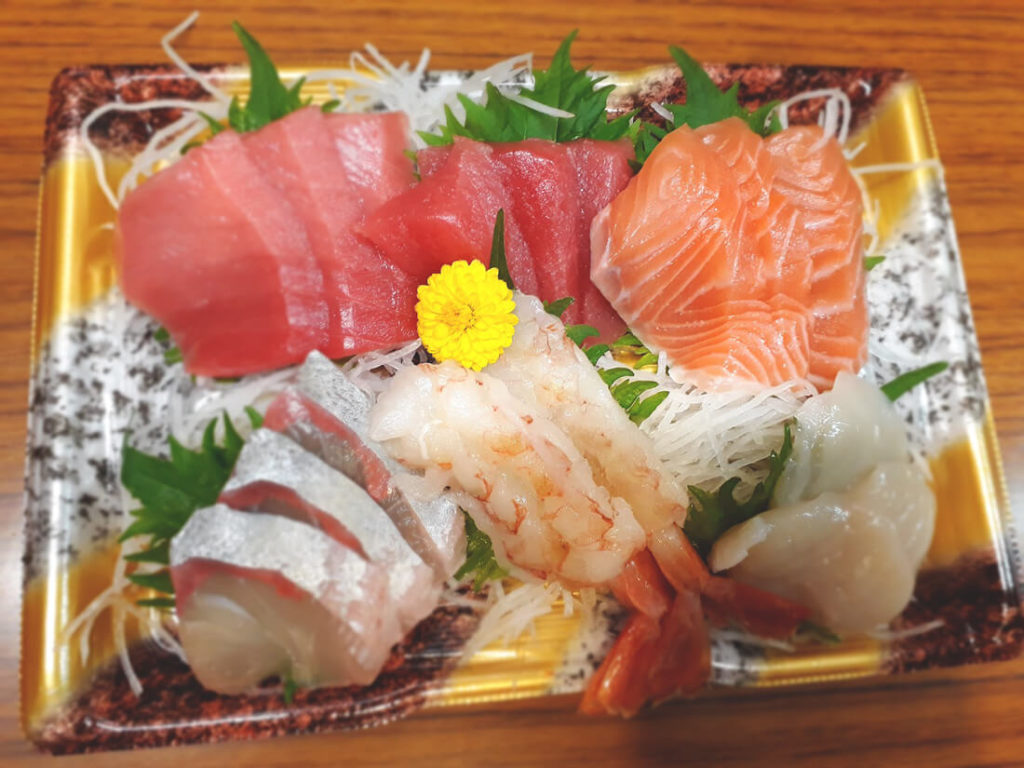
Japanese and their vending machines
Food from vending machines is definitely our quirky highlight, which is common practice in Japan. You’re standing in front of a restaurant. The food is displayed in the window as a plastic model, which can now also be purchased as a souvenir! It’s written underneath in Japanese characters what it is.
Then you go to a vending machine, select your food, and pay with cash or card. You take the receipt back to the restaurant and hand it in. The meal is then brought to your assigned seat. These shop windows have helped us several times when deciding what to eat based on its appearance!
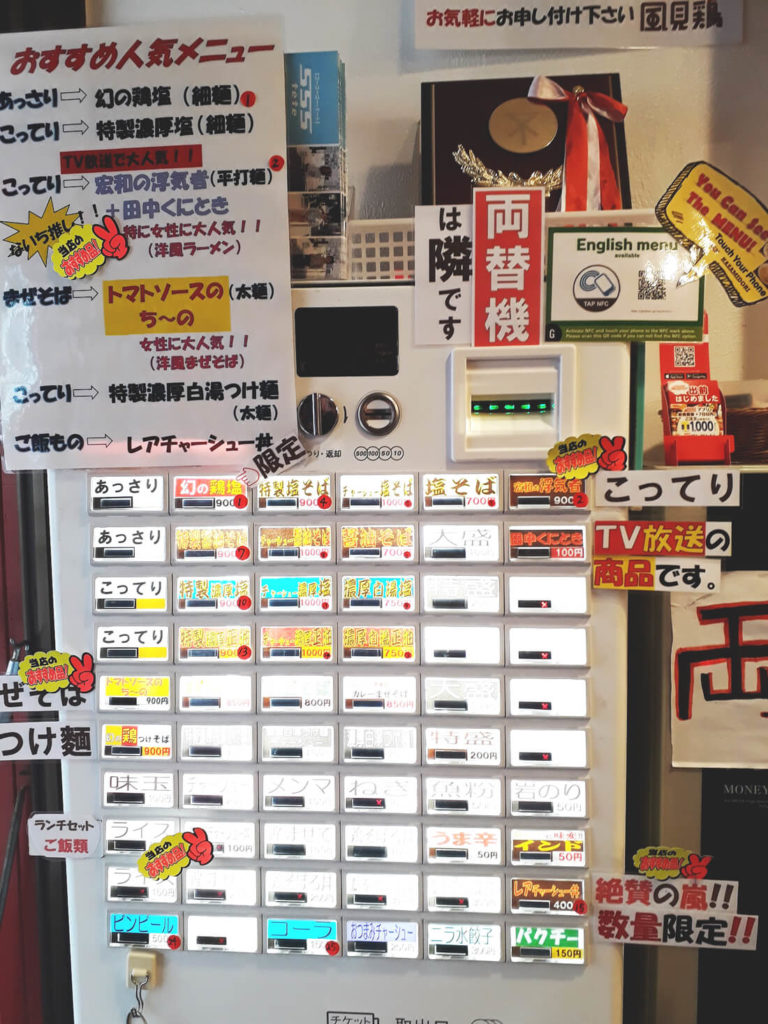
Packing List – These are the Things You Should Bring
In our opinion, you should pack the following items for your trip through Japan. Getting affordable data plans in Japan is a challenge. You can either get a tourist SIM card, usually valid for 7-30 days (for around €20-30), or rent a WiFi router for around €3 per day from, for example, Ninja Wifi, and pick it up at the airport upon arrival.
We felt absolutely safe at all times in Japan. Especially if you plan to stay in large dormitories in Japan, we still recommend a pack safe*. Because if there’s one thing that’s true about Japan, it’s the expectation that everything will happen in a very small space.
There’s rarely enough lockable storage space for backpacks and daypacks! As they say, prevention is better than cure! You’ll also need a power adapter* with flat pins. North Americans have identical ones!
Other important travel tips for Japan
Food tips
You might be wondering, isn’t Japan incredibly expensive? It depends on a) where you eat, b) where you sleep, c) what you do, and d) how you get there. We usually bought our breakfast, but also snacks or dinner, at the large convenience chains like 7/11, Lawson, Circle K, or Family Mart.
In Japan, they’re called konbinis. They have everything for those on a smaller budget. In addition to a small selection of freshly baked goods, they usually also have baked goods, coffee from automatic machines, and warm-up meals, as well as a post office, printers, ATMs, sometimes Wi-Fi, and restrooms!
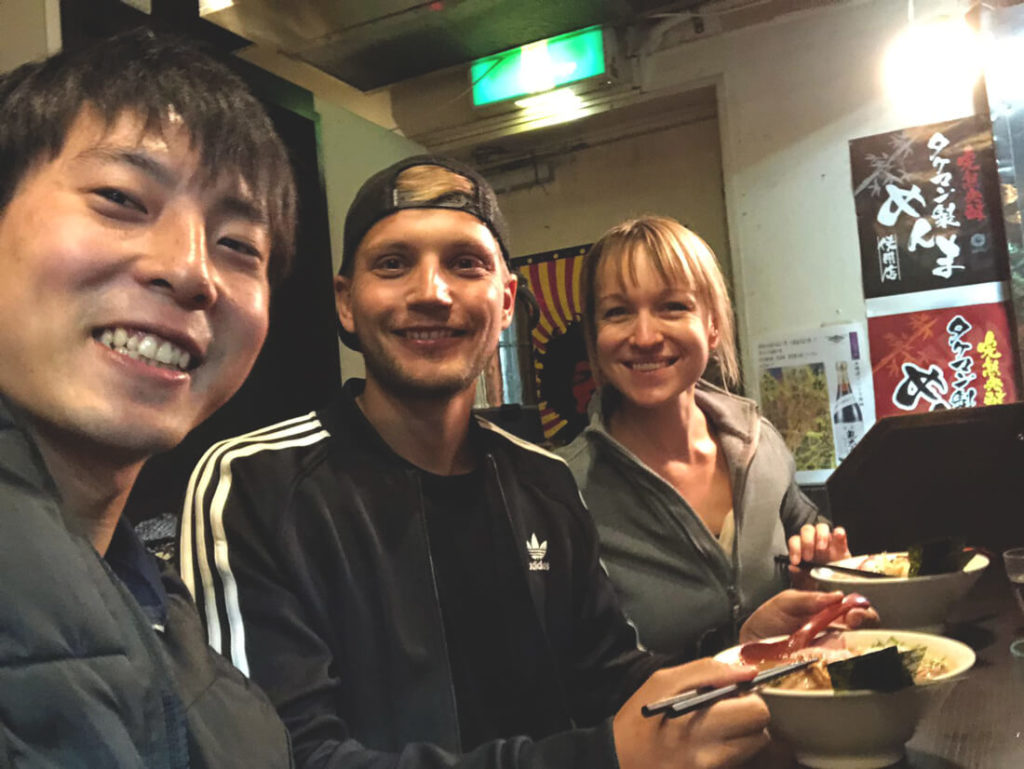
The combination of konbini and the occasional meal out is a good balance. Our favorite snack is onigiri – these rice triangles filled with tuna, for example, in nori sheets taste delicious, are very inexpensive, and can be found in every konbini. Remember rule-obsessed Japan? Each corner of the onigiri has a number on it, so you know in which order to eat your onigiri.
By the way, restaurants give you free water or tea! That means you don’t need to order a drink. Look around a bit or just ask. We only realized this after our visit to a running sushi restaurant. After we had already ordered our drinks, we noticed a small tap on the treadmill. Water – all you can drink.
There’s also a proper chopstick etiquette: never cross your chopsticks, never spear your food with them, never point at someone, or never stick them in the rice. This is all considered very rude. Oh, and you shouldn’t blow your nose at the table either! But slurping is cool! Last “saving” tip regarding food: In Japan, you don’t need to tip. You pay either at the vending machine or at a cash register after eating. Tipping is also considered rude!
Accommodation Tips
We mostly slept in hostels. The big advantage is that you usually have access to the kitchen. Making breakfast is really fun there, because company is free, but not a must. We were also lucky enough to surf on a couch once. That’s free, too!
Before entering an apartment or hostel, shoes are always taken off in the vestibule or entrance area. Sometimes you’re given special slippers for using the bathroom – don’t walk in there with socks on. Air conditioning in Japan both cools and heats things. We used ours now and then, as it was freezing at 5°C outside.
Tips for Sightseeing & Transport
Entry to castles, museums, and onsen costs a fair bit. The parks and shrines, on the other hand, are free. We always chose in advance what we absolutely wanted to see and thus kept our expenses in balance. Shinkansen, bus, regional trains, renting a car… It’s best to consider in advance which mode of transport you choose in Japan! This can save you a lot of money.
If you’re thinking of buying a new camera, you can also save on VAT as a tourist in Japan in all TAX-FREE shops. Just look for the “TAX FREE” logo.
Conclusion on Japan
What else can we tell you at the end of our Japan report? Not much more to say except embark on your own adventure in these amazing cities. In our eyes, this country exudes a very special fascination. We hope you’ve caught the travel bug after reading this, and we hereby say: Thank you, Japan, see you soon! “Arigato, Japan, jaa, mata ne.”
